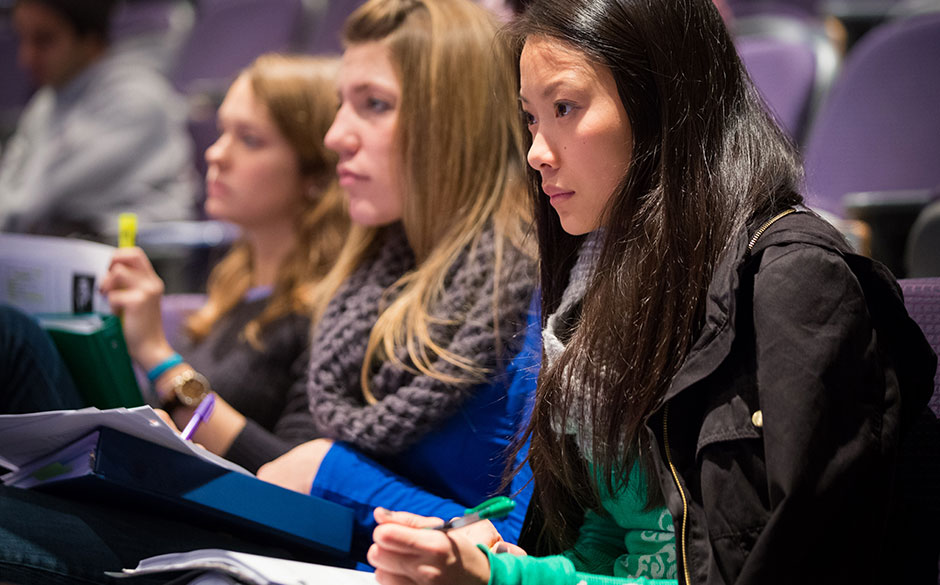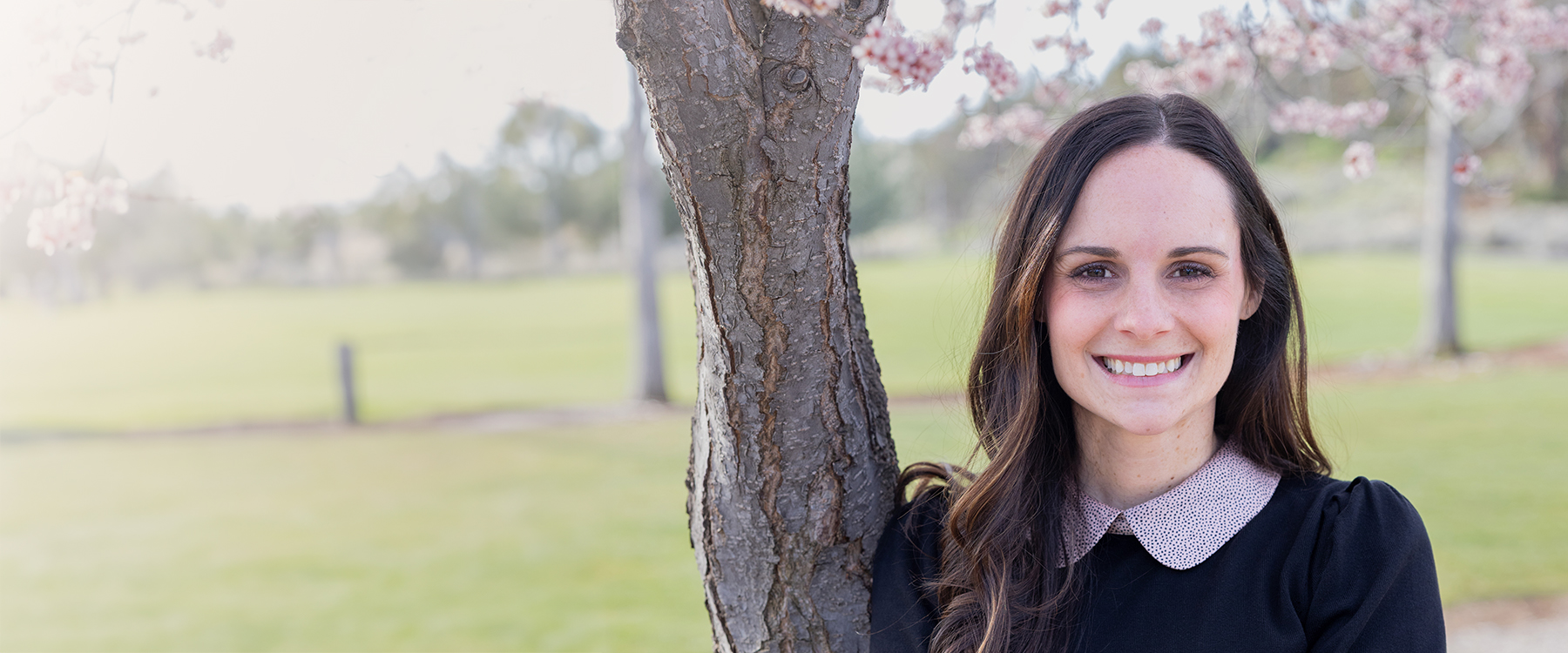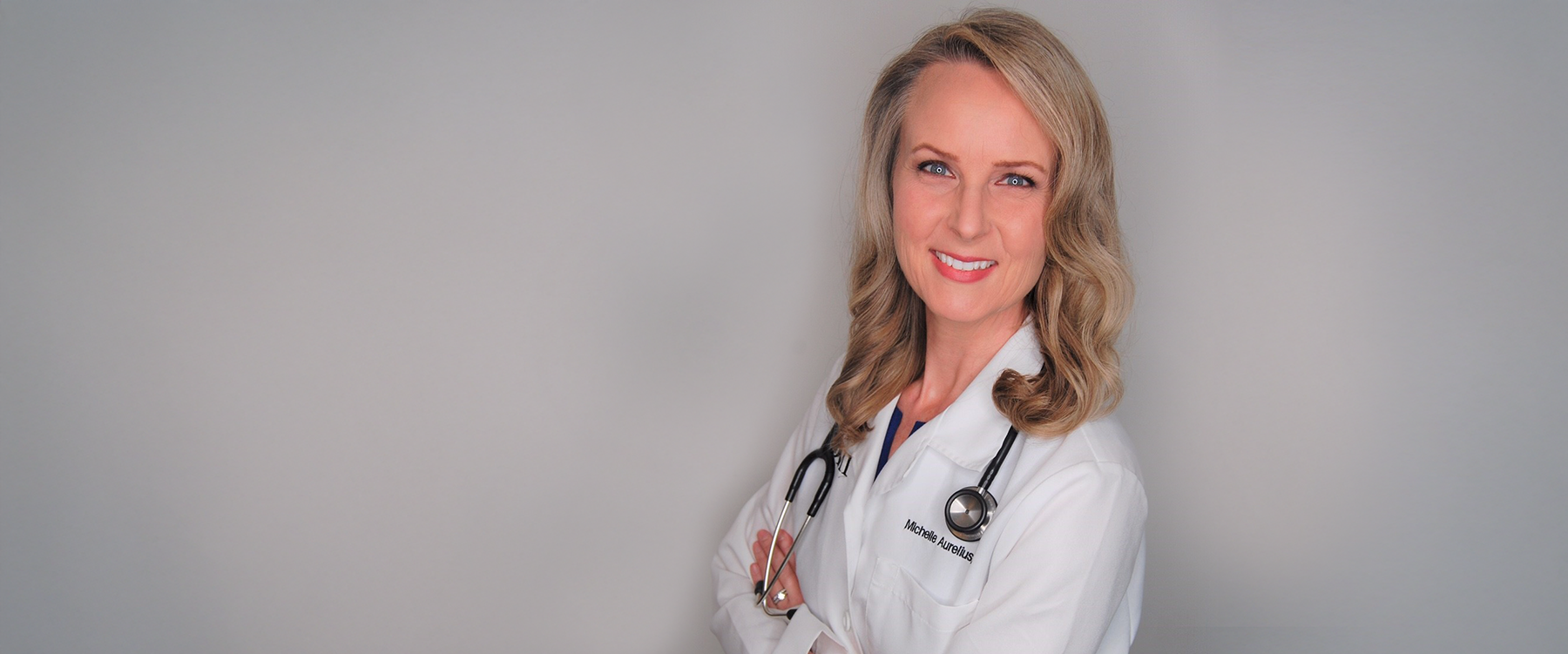“The question you start with is very different from the question you end up with,” says Katie Lebold, a student in the joint MD/PhD program at the OHSU School of Medicine.
Lebold is referring to the research process, where observation and discovery may lead a scientist to ask new questions and seek answers down a new path. For a student-researcher, developing skills that match the fluidity of this process is increasingly important. The school is responding by re-thinking the traditional structure of an academic program.
In Lebold’s case, she started by looking into the interaction of Vitamin E and other nutrients during fetal development for her master’s degree in nutrition at Oregon State University. Upon enrolling in the MD/PhD program at OHSU School of Medicine, she joined the lab of David Jacoby, MD, interim chair and professor of medicine, OHSU School of Medicine, vice chair for research in the Department of Medicine and director of the MD/PhD Training Program, assisting in his study of how immune cells interact with nerves in the airway to trigger asthma.
When she wanted to put these two lines of research together and explore the intersection of asthma and maternal-fetal interactions, the coursework she needed didn’t fit within a single program track.
Currently, the OHSU School of Medicine has 16 biomedical PhD programs serving 225 students, with a prescribed curriculum for each program.
“More and more, science is so complex. You need so many skills and touch on so many areas. It’s hard to be pinned into one predefined program.”
Katie Lebold, student in the joint MD/PhD program at the OHSU School of Medicine
Lebold ended up in the Biomedical Engineering Graduate Program, not because she had an engineering project but because Interim Department Chair, Owen McCarty, PhD, understood that his role was to train her how to think, not dictate what she learned.
In response to scenarios like Lebold’s, the OHSU School of Medicine is transforming its PhD program to remove these roadblocks and allow students to craft their course of study according to the knowledge needed to answer their question, even when that question changes.
Under the leadership of Allison Fryer, PhD, associate dean for graduate studies at the OHSU School of Medicine, a 13-person committee Creative IDEAS Committee was formed to address this issue and rethink the curriculum. The committee has developed a program that will build on OHSU’s current research strengths, while prioritizing critical thinking, communication and professional development and a flexible curriculum to encourage interdisciplinary research.
“More and more, science is so complex,” says Lebold. “You need so many skills and touch on so many areas. It’s hard to be pinned into one predefined program.”
This new PhD program will let discovery define the path rather than the path defining discovery, and will:
- Shift from a prescribed program to a flexible, individualized curriculum.
- Shift from one mentor to a team of mentors to meet each student’s academic, research and peer learning and support needs.
- Encourage engagement in seminars inside and outside a student’s field of research with a tailored plan that includes a range of opportunities for acquiring knowledge yet a common focus on communication, critical thinking, teamwork, management and leadership.
- Offer a series of basic, core content instruction in year one, as occurs now, but then also offer “just-in-time” courses as students’ research and skill requirements evolve throughout their later years.
- Provide formal instruction in professional and communication skills rather than ad-hoc acquisition of these essential competencies.
- Move away from having 16 independent PhD programs toward fewer, interdisciplinary programs.
“Nationally, the landscape of scientific practice is changing,” explains Robert Duvoisin, PhD, professor of physiology and pharmacology at the OHSU School of Medicine. He is chair of the committee proposing this new approach. “Scientists need interdisciplinary approaches to tackle complex problems, more students are seeking non-academic careers and traditional funding streams are limited. OHSU must be able to respond to the new areas of research that basic science leaders are bringing to the university, better accommodate the institute model that has been fueled by philanthropy and remain competitive for the very best students. All of these drivers influenced the need to transform.”
Rethinking the PhD program comes on the coattails of the similarly reimagined YOUR M.D. curriculum the OHSU School of Medicine put into place for MD students three years ago. One aspect of the program is to give medical students the opportunity for a deeper research dive into a subject area of their choice. With a five-month or one-year option, the Physician-Scientist Experience is helping to nurture future providers who have investigatory expertise.
The experience is important because “physician-scientists play the critical role of bringing knowledge from the patient bedside back to the lab bench,” says Peter Mayinger, PhD, associate professor of medicine and director of YOUR M.D.’s Physician-Scientist Experience. “Ultimately, we need to be creating more physician-scientists in the United States.”
Last year, fourth-year M.D. student Chace Moleta spent five months in the lab of Michael Chiang, MD professor ophthalmology, OHSU School of Medicine, working on retinopathy of prematurity in preterm infants as part of the YOUR M.D. program. Moleta went on to co-author three studies, including lead authorship of a study published in the journal Ophthalmology last fall.
Moleta says he’s grateful for the immersion experience. “I knew I wanted a career that had some research component, but this experience solidified it for me,” he says.
Despite less classroom time, data shows MD students’ mastery of medical knowledge since launching the new curriculum is as strong as it was with the traditional structure. In 2017, third-year MD students—the first cohort to use the new curriculum—continue to track with the national mean on the Step 1 exam, and nearly every student passed the Shelf exams—the test required after completing certain clinical rotations.
Rethinking the curriculum, challenging the status quo, and adjusting to the changing needs in the scientific landscape is what OHSU does best. By reimagining the university’s educational approach, OHSU is shaping a generation of interdisciplinary health care leaders and scientists who will go out into the world undaunted by big questions and unhindered by a single pathway in seeking answers.




